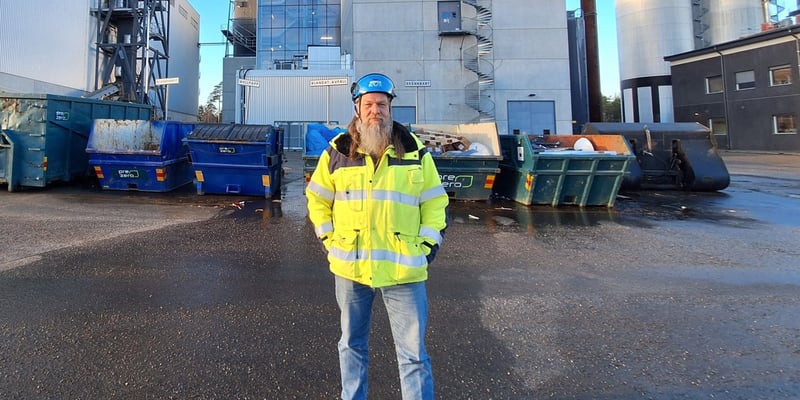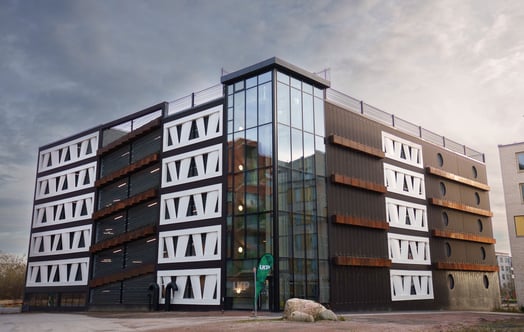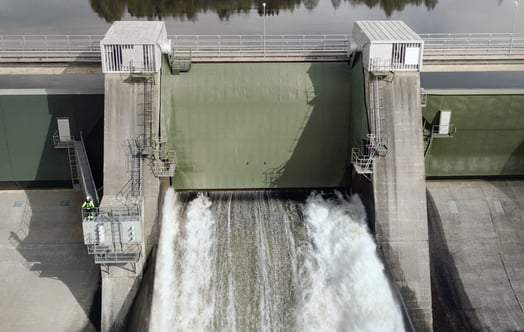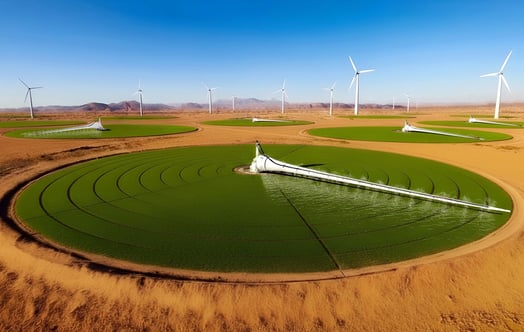In Jordbro outside Stockholm, Vattenfall plans to have a facility in place by 2028 that will be able to capture up to 150,000 tonnes of carbon dioxide from the biomass fuelled heat plant. Now Vattenfall is taking an important step by submitting an application for an environmental permit for its first full-scale facility for the creation of negative emissions.

Robert Mattsson, project manager for the carbon dioxide separation facility in Jordbro.
In the combined heat and power plant in Jordbro, biofuels, mainly wood chips and wood waste, are burned to provide residents in nearby municipalities with district heating and to generate electricity. With the new facility, the biogenic carbon dioxide will be captured and then stored in a process known as bio energy carbon capture and storage (BECCS).
Negative emissions are achieved by removing the biogenic carbon dioxide that is part of the natural carbon dioxide cycle. This can then be used to neutralise emissions that are difficult or impossible to remove.
At the facility, the carbon dioxide is liquified by pressurising and cooling it down to between −25 and −30 degrees. It can then be transported by train or truck, and in the case of storage at sea, by boat. It will then be pumped into bedrock at a depth of around 3,000 meters, likely in the North Sea or potentially on land in Denmark.
The carbon dioxide becomes part of the rock
The rock in the lower layers of the bedrock should be porous to allow the carbon dioxide liquid to be pumped down. On top, the rock must be denser to act as a lid and keep the carbon dioxide from seeping out. Over time, the liquid carbon dioxide will then mineralise and become part of the rock. How long this takes depends on the type of rock it is stored in.
Though the capture technology has been around for a long time, the challenge is in the chain that starts when the carbon dioxide leaves the facility and ends with the final repository in the bedrock. Currently, there are neither boats nor railcars developed to transport carbon dioxide in this way and ports are not equipped to handle it.
“There is no such chain. There are a few pieces here and there, but the market is emerging to join the links of the chain. That's where the major challenges in the project lie,” says Robert Mattsson, project manager for the carbon dioxide separation facility in Jordbro.
The Swedish government is investing SEK 36 billion
One way of raising revenue for the project is to participate in reverse auctions. In these, the Swedish government plans to grant subsidies amounting to SEK 36 billion to BECCS during 2026–2046, with the Swedish Energy Agency acting as the auctioneer.
Another way is to sell all or parts of the negative emissions to private companies. As it looks now, companies that have come a long way in their sustainability work are the most relevant recipients. Like Vattenfall, they may have set targets based on the Science Based Target initiative (SBTi), and need to neutralise the last of their carbon dioxide emissions.
Or it could be companies that buy negative emissions now in order to build up a portfolio to be used later on for the shortage of negative emissions that can conceivably arise when a great number of companies begin to approach the years when they should have achieved net zero emissions.
The Jordbro project started in 2021. Now, an application for building the full-scale facility is being submitted to the Land and Environment Court. In addition to the environmental assessment, a new detailed plan is also needed and land needs to be purchased by the municipality for the 5,000–7,000 additional square metres the facility will require.
Mattsson expects that everything will go smoothly, that the necessary permits will be in place, and that the detailed plan will be obtained relatively quickly. He feels that the municipality has been extremely helpful and that municipal management takes a very positive view of the project.
“We see great potential in having a facility in Jordbro that will enable negative emissions – an investment that is completely in line with the municipality's ambitions to reduce their climate impact. We are excited and optimistic to see how the project will develop and how we can work together for a more sustainable society,” says Nicole Forslund, municipal commissioner for the Liberals, responsible for environmental and climate issues in Haninge municipality.



